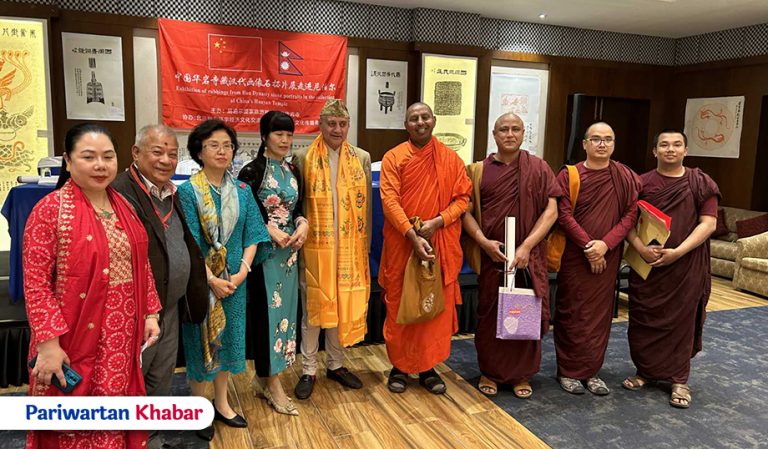
Kathmandu | On April 25th, the “Chinese Huayan Temple Collection Han Dynasty Portrait Stone Rubbing Exhibition”, jointly organized by the Nepal Tourism Board and the Chinese Huayan Temple, and undertaken by Global Communication & Cooperation Company and Chongqing Ci Zhou Cultural Communication Co., Ltd., was successfully held in Kathmandu.
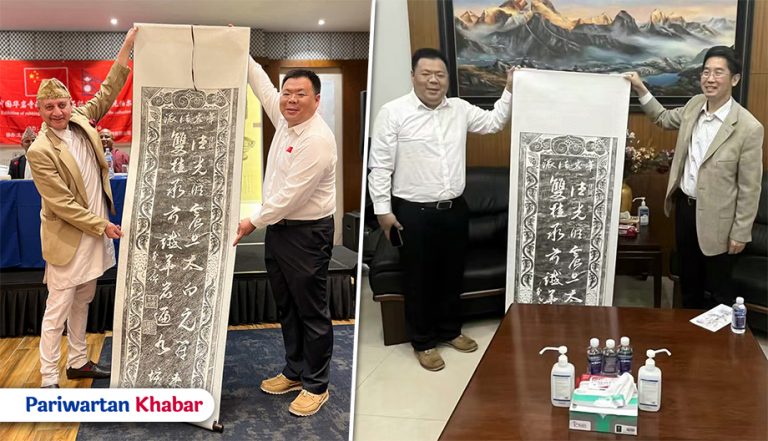
The exhibition, which featured nearly a hundred high-quality rubbings, all from the collection of the Huayan Temple Museum, is the result of nearly twenty years of collection and research by the abbot of Huayan Temple, Daojian. This exhibition marks the first cultural exchange exhibition by Huayan Temple and will help deepen cultural development and mutual learning between China and Nepal, as well as promote and deepen artistic exchanges and research between the two countries.
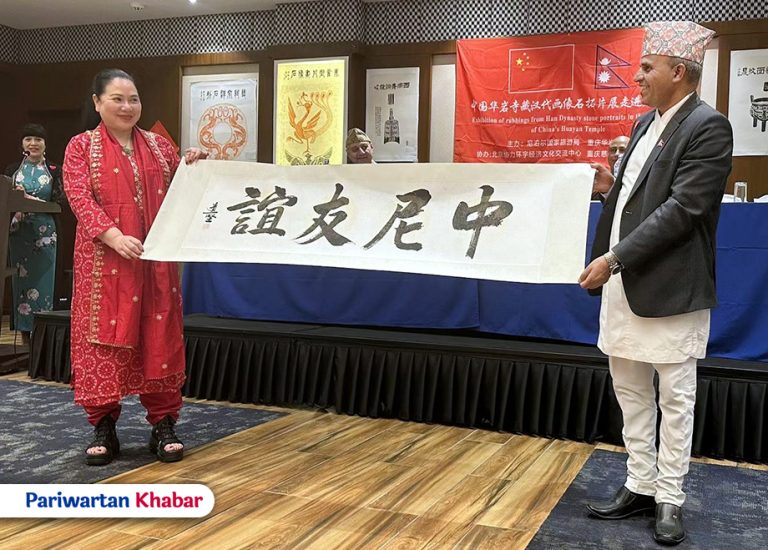
Portrait stones are carved architectural stones with images installed during the Han and Wei periods, representing a fine form of stone carving art. These stones not only represent the peak of classical Chinese art before the Han Dynasty but also had a profound impact on later Han Dynasty art, occupying an important position in Chinese art history. The Han Dynasty portrait stones depict various aspects of Han Dynasty’s political, economic, cultural, artistic, and social life, making them the most vivid images of Chinese Han culture and even Chinese civilization, known as an epic on stone.

Huayan Temple’s abbot, Daojian, sent blessings to the Nepalese audience on-site through video and introduced the artistic value and collection significance of the Han Dynasty portrait stone rubbings. He said, “Portrait stones are unique cultural heritage in Chinese history, containing aspects of Han Chinese social life, mythology, and historical stories. Rubbings are a way to transform stone carving into movable works of art, turning three-dimensional art into two-dimensional art. I hope that through this batch of precious rubbings from the Huayan Temple collection, Nepalese audiences can have a close look at China’s unique humanistic art and historical heritage.”
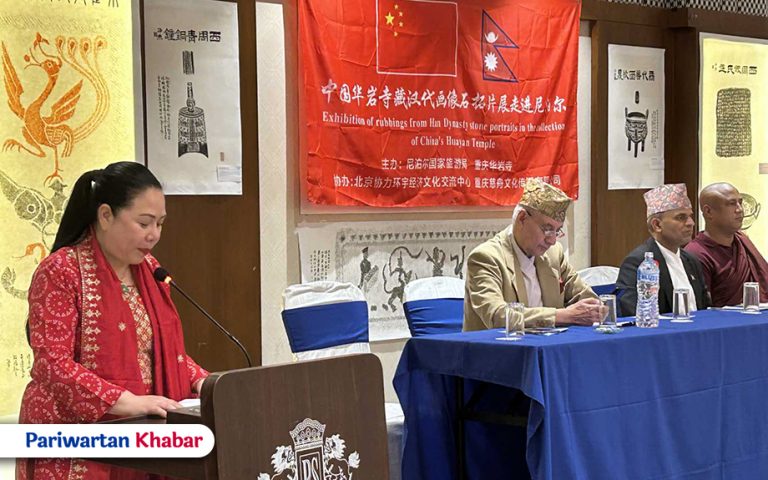
The chairman of the Nepal Tourism Board, Pandit, welcomed more outstanding traditional Chinese culture into Nepal and thanked Abbot Daojian for his contribution to cultural exchanges between Nepal and China. He also expressed hope that cultural tourism exchanges and cooperation between Nepal and China can be strengthened.
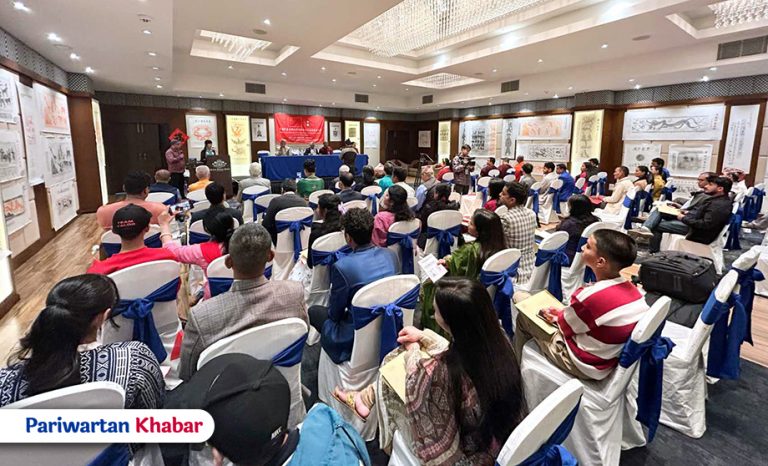
On the morning of April 25th, the delegation also visited the Chinese Embassy in Nepal and met with political affairs counselor Wang Xin. Counselor Wang welcomed the delegation and expressed affirmation and support for this cultural exchange activity. He hoped that the delegation will continue to strengthen exchanges between China and Nepal and make contributions to cultural exchanges and cooperation between the two countries.










